10. Taxi Driver
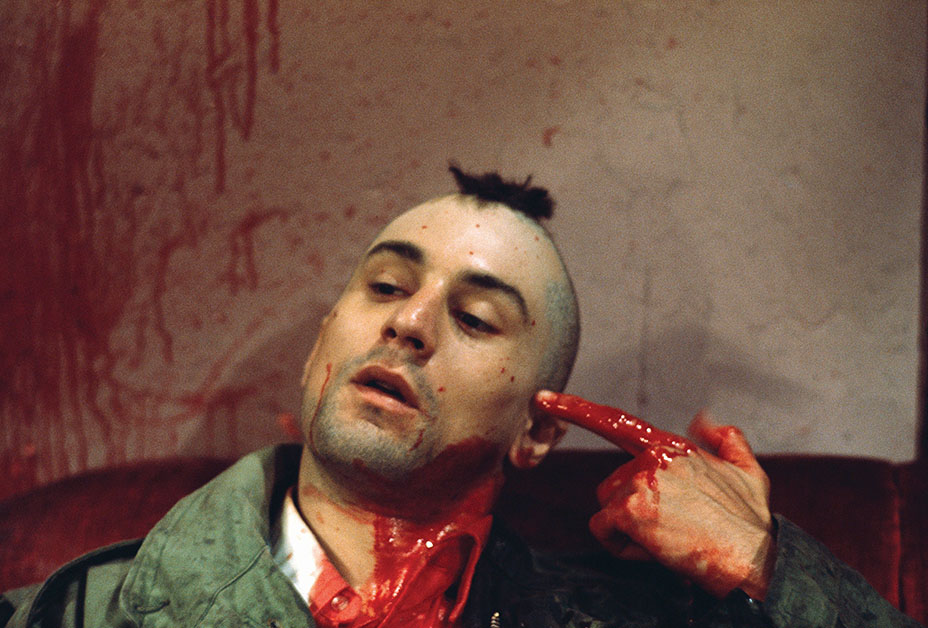
The bloodbath in the last scene of Taxi Driver ends with a failed attempt at suicide of Travis Bickle (Robert De Niro), who tries to shoot himself. Bickle then sits on a couch while the police come into the room.
Martin Scorsese then goes into a close-up of De Niro’s bloody head and stays on it until he points his finger at his own head, pretending to shoot his brains out. Bernard Hermann’s score (his last before he passed away) is aptly haunting, while De Niro perfectly delivers the tragedy of a man who has gone too far into his obsessions.
9. Silence of the Lambs
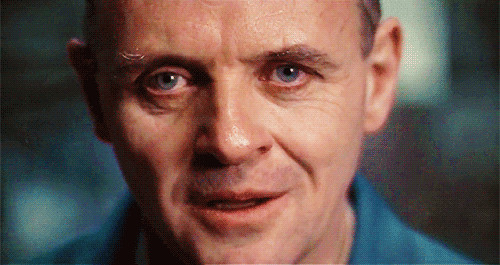
Jonathan Demme’s career, which among other things also includes some documentaries that are considered masterpieces of the genre, has seen him adopt a range of very different styles. His most successful film to date is probably The Silence of the Lambs, the story of Clarice Sterling (Jodie Foster) and her hunt for the killer Buffalo Bill.
Although he was given relatively limited screen time, Anthony Hopkins made his Hannibal Lecter a cultural icon and one of the most unforgettable characters the Nineties gave us. Lecter was the perfect tool for Demme to exercise one of his recurring tricks, the close-up in which the subject looks directly into camera. Hopkins’ eyes are bright and terrifying, and seem to look directly into the viewer’s soul as they do with Clarice’s.
8. Once Upon a Time in the West

In his 1968 classic Once Upon a Time in the West Sergio Leone fully expressed his artistic voice and created an ambitious feature which was narratively compelling and visually stunning. The Italian director was the master of duel scenes, and his go-to technique for such scenes was the close-up.
The resolution of the film comes with a long awaited duel between Henry Fonda and Charles Bronson. The scene is as full of tension as it can be, and the unspoken conflict between the two characters is unfolded simply through their eyes and their harsh faces.
7. Casablanca

Casablanca, the quintessential “classic” movie, delivers an extremely memorable close-up near its end.
The famous airport scene shows Ingrid Bergman and Humphrey Bogart exchange their last words; initially, the scene uses the classic technique of shot and countershot, but then suddenly turns to a close-up of Bergman’s face, crying, as tender as ever, just before Bogart says the immortal line “Here’s looking at you, kid”. If ever a shot made an actress a legend, this is it.
6. A Clockwork Orange
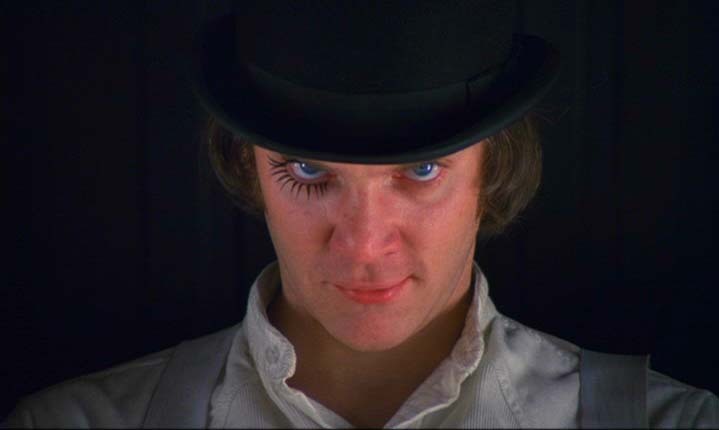
A great number of Stanley Kubrick’s films have a scene in which a character looks into camera with an hallucinated and almost demoniacal smile.
The first famous example of what has become known as the “Kubrick stare” is found in A Clockwork Orange. For example, during the opening scene Malcolm McDowell’s evil Alex is shown staring directly to camera, dressed in his droog uniform. Starting from the close-up, the camera then slowly zooms out to reveal a room full of his companions and many female mannequins.
5. Come and See
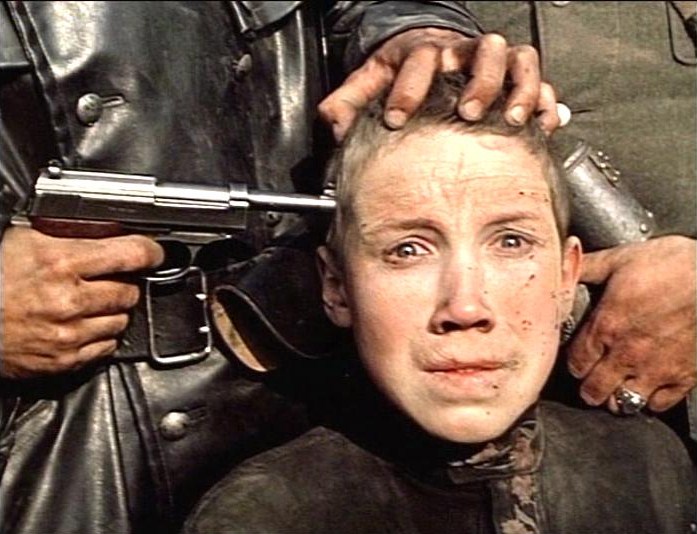
Come and See (Idi i smotri) was Elem Kilmov’s last film before retirement and was released in 1985; it is the deeply disturbing tale of Flyora, a young man who joins the Bielorussian resistance during the Nazi occupation of the country.
The unexperienced partisan faces the horrors of war and goes trough one traumatic event after the other, changing in mind and body. The film is built around the emotional experience of Flyora, and its many close-ups express Flyora’s anguish as his face becomes more and more marked by trauma.
An iconic use of the close-up comes when Flyora is taken and held at gunpoint by the Germans who take a picture of him while an entire village is exterminated and a church full of villagers is set fire to. A chilling moment, during which all innocence completely disappears from the eyes of the young man.
4. Persona

Considered by many as Bergman’s best work, even if it is an hard task to choose a single film out of such a vast filmography, Persona is a masterpiece of psychological cinema. It tells of two very different women (who incarnate the two main personalities people can take on in their life) and their progressive merging into each other.
Such a unique theme required a credible rendition of the women’s traits; Bergman succeeded in this task through Sven Nykvist’s black and white cinematography, and also by focusing on the actresses’s faces, which are at the center of many shots, often in haunting close-ups which perfectly epitomize the characters’ personalities and deliver the film’s message.
3. Vivre Sa Vie
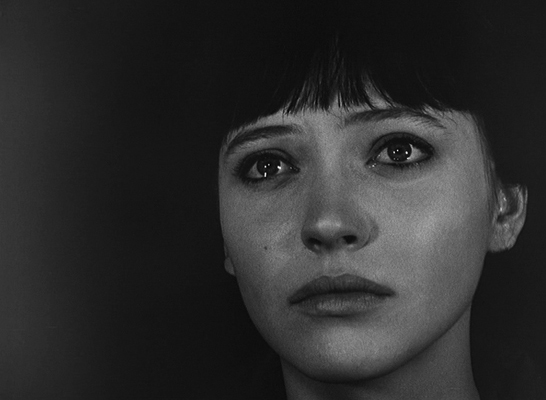
Vivre Sa Vie is Jean-Luc Godard’s fourth feature and deals with the issue of prostitution through the story of Nana, played by Anna Karina, a young woman who leaves her family in order to pursue a career in acting but ends up as a street girl under the control of Raoul, a pimp. The film features the distinctive “cinema veritè” style of early Nouvelle Vague and its narration is divided into twelve “tableaux”.
An iconic image from the film is the close-up of Nana smoking a cigarette while a man embraces her; even more striking is the close-up in chapter 3, which shows a crying Nina in the dark of a theater while The Passion of Joan d’Arc is projected. While referencing the most famous “close-up movie” of all time, Godard delivers an unforgettable close-up of his own, a great depiction of the ennui and emotional power that are often found in masterpieces from French cinema.
2. The Good, the Bad and the Ugly
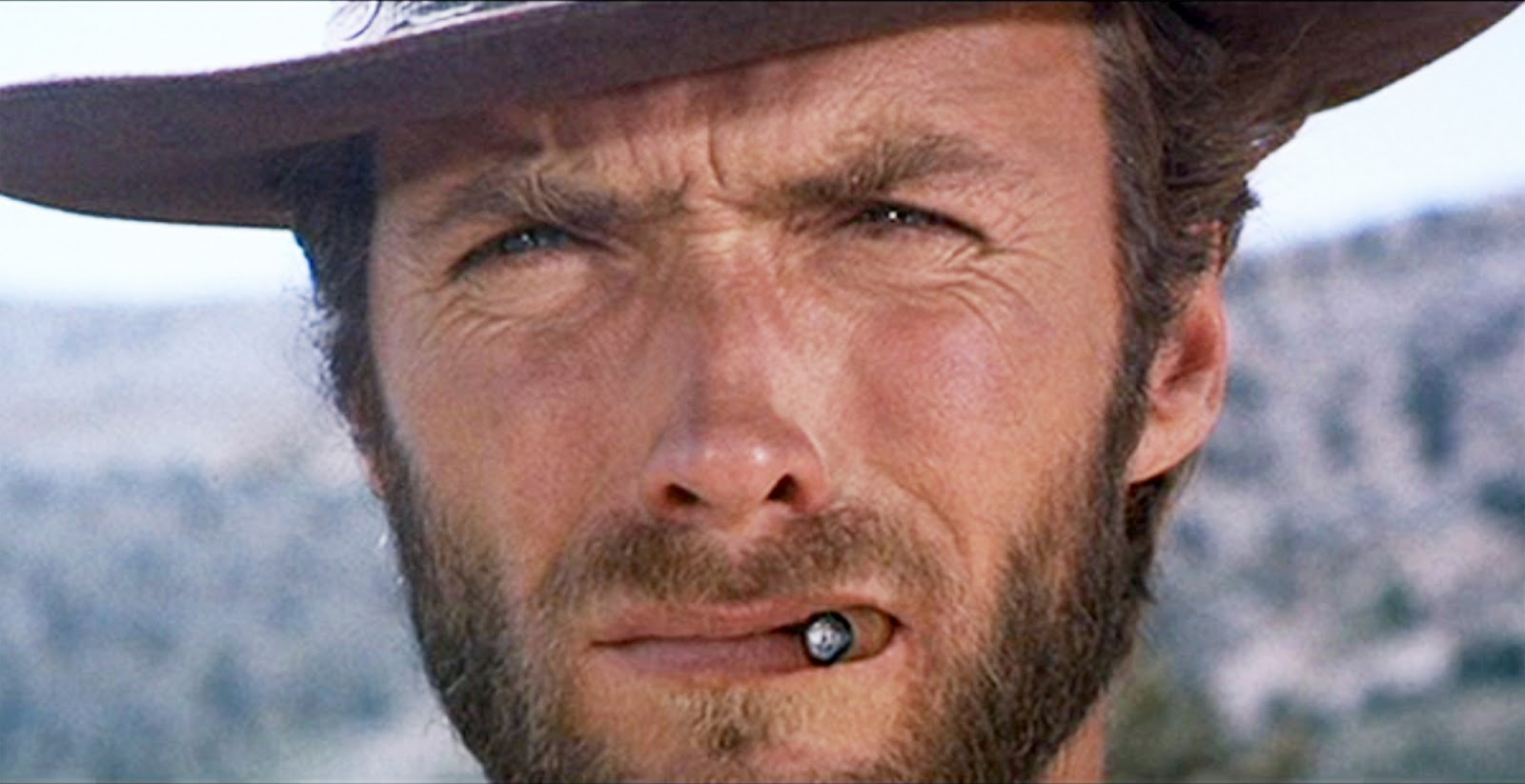
If someone was to associate a director to the technique of the close-up, the first name to come up would probably be Sergio Leone, the undisputed master of western cinema. His camera work was simple but extremely effective; his scenes convey a truly unique mixture of tension and atmosphere, partly in virtue of Ennio Morricone’s iconic scores.
A notorious parade of close-ups is shown in The Good, the Bad and the Ugly, during a Mexican standoff between the three main characters, played by Lee Van Cleef, Eli Wallach, and Clint Eastwood, whose faces have become universally recognizable thanks to this film, and probably this scene in particular.
1. La Passion de Jeanne d’Arc
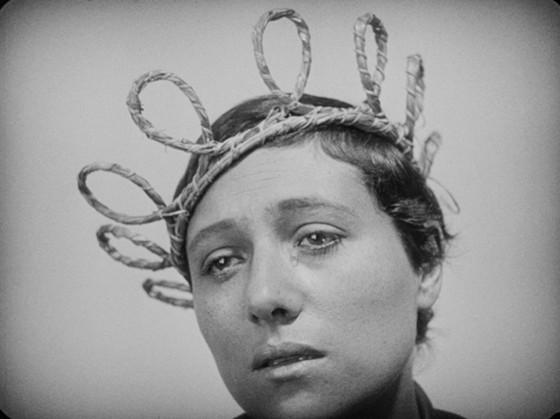
La Passion de Jeanne d’Arc (1928) by Carl Theodor Dreyer is a milestone of cinema history and is revered as a unique film experience. It tells of the trial Joan of Arc went through in Rouen, where a group of judges interrogated her with the purpose of condemning her as an heretic;. It is a moving and evocative piece of history, and the film has been praised for its mise-en-scène and its depiction of the main character (played by the sublime Renee Falconetti).
La Passion constantly focuses on the close-ups of Joan and the judges; this choice has the effect of amplifying the emotions and anguish Jeanne goes through, and at the same time accentuate the alienating setting of the trial. Never had there been a bolder use of the technique, and probably no other film has surpassed the empathic intensity of this film’s close-ups.
Author Bio: Riccardo Basso is an Italian cinephile specializing in Humanities and Philosophy. He has only recently started writing about his favorite interest, cinema, but wishes to continue doing it (just don’t tell his cinephile friends he has seen every 007 movie at least three times).